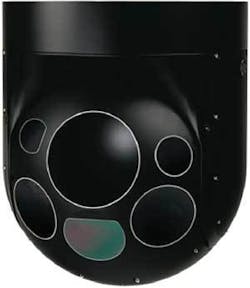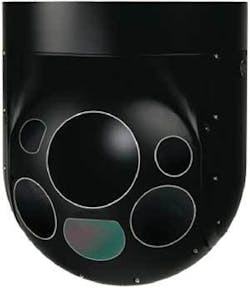By John Keller
HUNTSVILLE, Ala. - FLIR Systems Inc. in Portland, Ore., is providing a multisensor airborne thermal imaging system that may help U.S. Army ground forces anticipate the behavior of terrorist and irregular militia forces who are fighting in urban terrain like Baghdad.
FLIR won a $25.5 million contract in October from the U.S. Army Space and Missile Defense Command in Huntsville, Alabama to provide the FLIR Star SAFIRE III stabilized multi sensor system to support the Army’s Real-Time Adversarial Intelligence & Decision Making (RAID) research program.
The RAID program seeks to help commanders anticipate enemy actions and deceptions, with particular focus on providing real-time support to tactical commanders whose forces are fighting in cities. The program focuses on how to anticipate enemy actions with techniques and technologies to help characterize, predict, and respond to likely enemy courses of action.
The FLIR Star SAFIRE III, which offers multiband imaging and sensor fusion, can accommodate as many as six sensor payloads that capture image detail in the mid-infrared, image-intensified charge-coupled device (CCD), and visible-light spectral bands.
The system’s optics and image processor permit selective fusing of the thermal image with imagery from the image-intensified CCD camera or three-CCD spotter TV for identification and scene detail. The device has a 640-by-480-pixel focal-plane array.
The SAFIRE III sensor payloads can include a four-field-of-view infrared sensor, image-intensified CCD, three-chip CCD spotter, low-light television, laser rangefinder, and laser pointer or wide-beam laser illuminator.
Work on the Army contract will be in FLIR’s Portland, Oregon, production facility. Deliveries will begin immediately. FLIR engineers designed the SAFIRE III for intelligence, surveillance, reconnaissance, border security, search and rescue, navigation, and target identification.
The Army RAID program, which is in cooperation with the U.S. Defense Advanced Research Projects Agency (DARPA) in Arlington, Va., seeks to make use of emerging technologies in adversarial and deception reasoning.
Ultimately RAID techniques and technologies will be folded into the Distributed Common Ground Station-Army (DCGS-A), which provides integrated and timely intelligence through a worldwide distributed, network-centric, system-of-systems architecture for conducting collaborative intelligence operations.
The RAID program’s four central goals are to provide predictive, anticipative analysis of enemy future actions while making assumptions and suggestions for friendly actions; identify the enemy’s attempts to conceal assets and actions and to deceive the friendly forces; monitor the unfolding operation and confirm, discount, and update predictive analyses; and support analysis such that it does not impose additional workload on the commander and staff.
RAID will use novel approximate game-theoretic and deception-sensitive computer algorithms to provide real-time enemy estimates to tactical commanders. In doing so, RAID will address adversarial reasoning-or the ability continuously to identify and update predictions of likely enemy actions; and deception reasoning-or the ability to detect likely deceptions.
The Army’s DCGS-A will consolidate the functions of 12 programs into an integrated intelligence/surveillance/reconnaissance capability.
Programs to be consolidated are the All Source Analysis System-Light (ASAS-L); Analysis and Control Team-Enclave (ACT-E); Block II Analysis and Control Element (ACE); Common Ground Station (CGS); Counter-and Human-Intelligence Management System (CHIMS); Prophet Control; Integrated Meteorological and Environmental Terrain System Light (IMETS-L); Digital Topographic Support System-Light (DTSS-L); Guardrail/Guardrail Information Node (GRIFN); Tactical Exploitation System (TES); Ground Control System (GCS); and Enhanced Trackwolf.
For more information on the FLIR Star SAFIRE III contact FLIR Systems online at www.FLIR.com.




